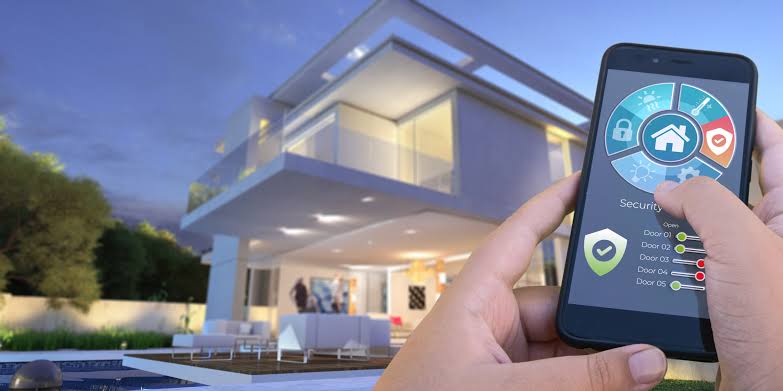The evolution of smart home technology has drastically changed how people approach security in their living spaces. With growing concerns about safety and privacy, homeowners are increasingly turning to intelligent gadgets that provide both convenience and protection. The future of smart home security gadgets is not only about deterring intruders but also about integrating artificial intelligence, automation, and connectivity to create holistic safety systems. As innovations continue to emerge, smart security will become more advanced, personalized, and reliable.
Rise of Artificial Intelligence in Security Systems
Artificial intelligence is set to play a central role in the future of smart home security gadgets. AI-powered cameras and sensors are becoming more capable of distinguishing between normal household activity and potential threats. For instance, a security system can identify whether a movement detected is caused by a family member, a pet, or an intruder.
Future innovations will likely include predictive analytics, where the system learns household routines and flags unusual behavior in real time. This level of intelligence will reduce false alarms and provide homeowners with more accurate alerts, improving trust in the technology.
Integration of Biometric Security
Biometric authentication is another major innovation shaping smart home security. Fingerprint recognition, facial identification, and voice recognition are already being integrated into smart locks and entry systems. As this technology evolves, future biometric solutions will be faster, more accurate, and harder to bypass.
For example, homeowners may soon rely on multi-factor biometric authentication that combines facial recognition with voice patterns or retinal scans for maximum protection. Such advancements will make it nearly impossible for unauthorized individuals to gain access.
Expansion of Internet of Things (IoT) Connectivity
The Internet of Things is the backbone of modern smart home security. In the near future, IoT devices will be even more interconnected, allowing different gadgets to communicate and work together seamlessly.
Imagine a scenario where a motion sensor triggers smart lights, security cameras, and automated door locks simultaneously, creating a layered defense system. Future IoT advancements will enhance this integration, ensuring faster responses and better synchronization across multiple devices.
Cloud-Based Security and Remote Monitoring
Cloud technology is already transforming smart security, and its role will only grow in the future. Homeowners can store video footage securely in the cloud, making it accessible from anywhere. As cloud solutions become more secure and affordable, they will enable longer storage of surveillance data and more advanced analysis.
Remote monitoring through smartphones and wearable devices will become more sophisticated, allowing homeowners to manage their home security in real time, even while traveling. Enhanced cloud integration will also support collaboration with emergency services for quicker responses during incidents.
Smart Sensors and Predictive Detection
Next-generation smart sensors will be more sensitive and capable of detecting threats before they escalate. These sensors will go beyond motion detection and include advanced features such as:
- Identifying unusual sounds like breaking glass or forced entry
- Monitoring air quality to detect smoke or gas leaks
- Tracking vibrations that may indicate tampering with locks or windows
This predictive detection will not only enhance safety but also improve overall home management by ensuring early response to emergencies beyond intrusions.
Energy-Efficient and Sustainable Security Solutions
As sustainability becomes more important, future smart home security gadgets will emphasize energy efficiency. Solar-powered cameras, low-power sensors, and energy-saving security hubs will become standard. These innovations will reduce dependence on electricity while maintaining round-the-clock protection.
In addition, sustainable materials and designs will play a key role in making smart home security eco-friendly without compromising performance.
Enhanced User Experience with Automation
Automation is a defining feature of smart homes, and it will be further refined in the security sector. Homeowners will be able to set customized security modes based on daily routines, such as activating cameras when leaving the house or disarming alarms automatically upon recognizing family members.
Voice-controlled assistants like Alexa, Google Assistant, and Siri will also integrate more deeply with security gadgets, offering seamless control through simple commands. This enhanced user experience will make advanced security systems more accessible and user-friendly.
Cybersecurity and Data Protection
With more connected gadgets comes a higher risk of cyber threats. The future of smart home security will place strong emphasis on cybersecurity, ensuring that personal data and video feeds are protected from hackers.
Advanced encryption, secure cloud storage, and blockchain-based authentication systems may be adopted to safeguard digital information. Future devices will likely feature automatic security updates, ensuring protection against evolving cyber risks without requiring user intervention.
Conclusion
The future of smart home security gadgets promises a blend of intelligence, sustainability, and seamless integration. From AI-powered cameras and biometric authentication to predictive sensors and energy-efficient solutions, innovation will continue to transform how homes are secured. At the same time, cybersecurity will remain a critical focus to protect against digital threats. As technology evolves, smart home security will not just be about preventing intrusions but about creating a safe, sustainable, and highly adaptive living environment for families worldwide.



